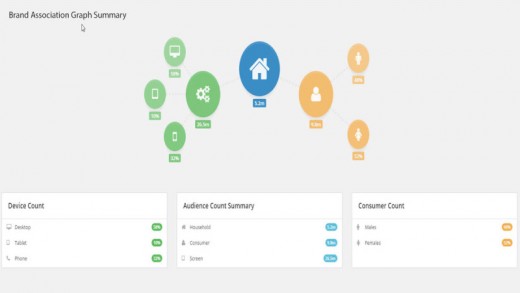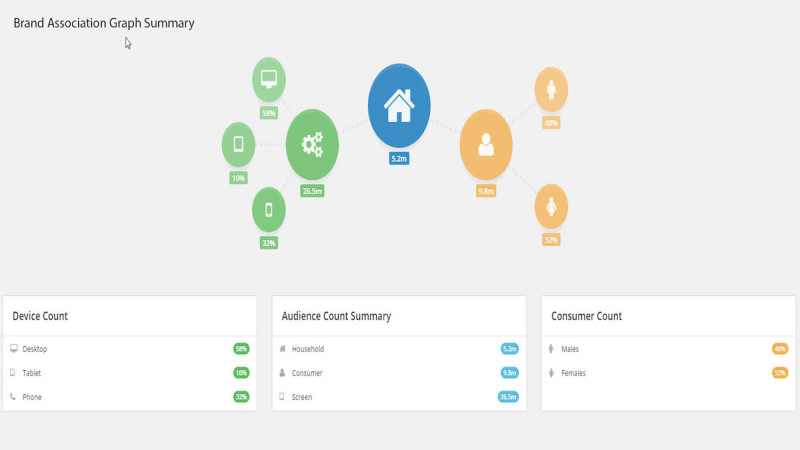Merger of Qualia And BlueCava Brings Together Users’ Multiple Devices With What They Want To Buy
The new company says it offers a unique data stack of intent-to-purchase, device mapping, and attribution, along with an ad serving platform.
Suppose there was a data engine that could determine which devices were owned by the same individual or household, and another data engine that could tell what people were interested in buying.
You’d want them to get together, right?
That, essentially, is what happened recently when cross-device tracker BlueCava and intent targeting platform Qualia announced they were merging.
“Lots of companies” can provide some piece of the full data stack that a modern marketer needs to identify consumers on their many devices, know what they want to buy, and know which ads work, Qualia CEO Kathy Leake told me. But, she added, the combined company — also called Qualia, and with her as CEO — offers “a capability that doesn’t really exist.”
“We are merging intent [data], mapping to multiple devices, and closing the loop to multi-device attribution,” she noted.
Qualia, which has specialized in tracking data indicating intent-to-purchase, has a managed service for delivering ads, or it can provide its data to an ad delivery platform. BlueCava has previously only provided data about matching multiple devices to the same household or individual, but the newly merged entity will be able to deliver either targeting-data-only or data-with-ads.
Intent data can show, for instance, that someone has loaded a web page about sneakers, thus indicating they are probably interested in buying a pair.
Mapping-to-devices infers that this smartphone, this tablet, this laptop and other devices most likely belong to the same individual or household. As the last step, attribution shows which device has made a purchase, thus helping to determine which marketing spend drove the purchase.
The new company says it can show non-click attribution, where the sale is attributed even though it didn’t result from a click on an ad. For instance, an ad for a FitBit fitness tracker that is delivered to a smartphone could be given credit for leading to a sale shortly thereafter on a laptop. This is possible even if the ad was not clicked, because BlueCava determined both devices belonged to the same person and made the logical inference.
Matching The Data
“Assuming your response came from a device” and not, say, from a walk-in sale at a bricks-and-mortar retailer, BlueCava CEO and Chairman Phil Myers told me, “we’re going to get it.” He will join the board of directors of the newly merged, New York City-based company.
Now, he said, he can see who’s in the market for a given product, in addition to BlueCava’s mapping of users to their multiple devices.
“I can now [serve an ad to mobile phone] and see the conversion on their laptop,” Leake said.
These leaves two key questions: what kind of accuracy can this chain produce, and how does the intent-to-purchase info about a user get matched up with the multiple-devices-you-use?
Leake noted that Qualia ingests only first-party data — that is, information by brands about their logged-in customers on sites or apps. So, she said, it consists of authenticated users and is highly accurate.
Myers said BlueCava collects about 40 to 50 billion data points a day, including IP addresses, location, time of use, device ID, behavior, and so on. If a smartphone checks on the New England Patriots at ESPN on a winter morning in a given location, and a laptop checks on them again in the evening at the same location, the inference is that both devices are owned the same user or household.
Although probabilistic — that is, drawing inferences based on data — he said BlueCava has a “90 percent or above” accuracy in matching devices to the correct individual or household. Here’s a BlueCava screen summarizing how multiple devices are assigned to the same user or household:
Putting together those two batches — intent and the device graph — involves matching cookies, IP addresses, device IDs, locations and other factors, Leake and Myers said. Although the companies have been partners for the last nine months, their technical platform integration is just beginning and they said they don’t yet have a figure as to the overall accuracy in matching intent to the multi-device user.
(Some images used under license from Shutterstock.com.)
Marketing Land – Internet Marketing News, Strategies & Tips
(39)

















